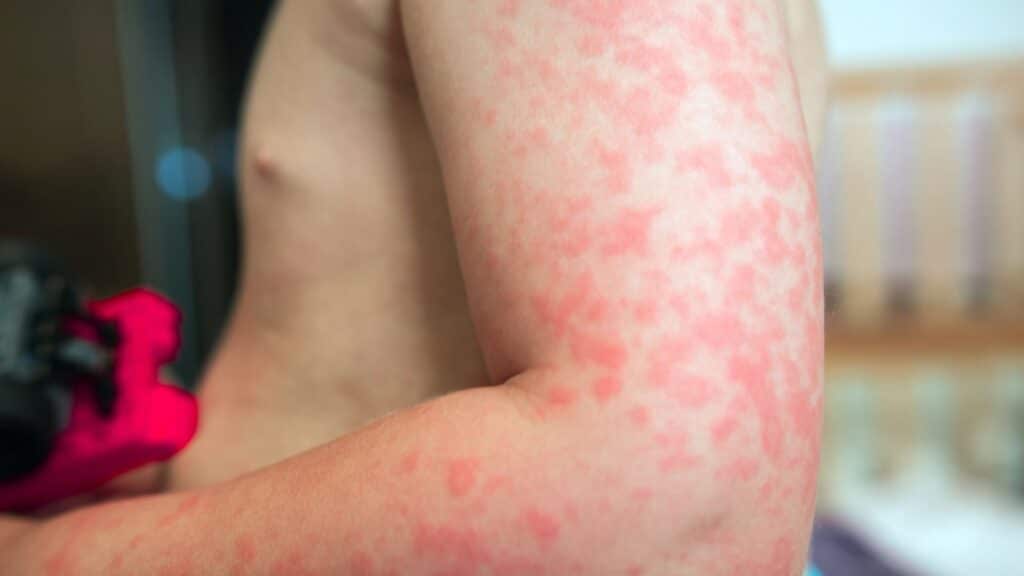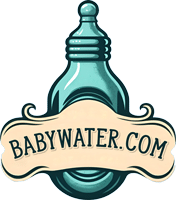Regarding baby water safety, one rare but critical condition to be aware of is aquagenic urticaria, also known as a water allergy in infants. This condition can be baffling as water is essential for life and something we naturally don’t consider harmful. Recognizing the signs and symptoms early is crucial for the well-being of your little one.
In this guide, we’ll explore aquagenic urticaria, its common signs and symptoms, and possible solutions. By educating ourselves on these rare conditions, we can better safeguard our children’s health and ensure they grow up happy and healthy.
What are Water Allergies?
Aquagenic urticaria is a rare condition in which skin rashes develop after the skin comes into contact with water. This might sound strange because our daily lives revolve around water—a substance thought to be completely harmless. An allergy to water can be especially concerning in babies due to their frequent baths and the joy most infants find in water play.
It’s important to know how baby water allergies differ from more common allergic reactions. Let’s break down these distinctions:
Common Allergies in Infants
- Usually triggered by things like pet dander, pollen, or certain foods.
- Symptoms may include hives, coughing, sneezing, or digestive discomfort.
- Often managed through avoidance of triggers or with antihistamines.
Water Allergies in Infants
- Elicited by contact with water irrespective of its temperature or source.
- Manifesting as itchy, red welts or hives on the skin shortly after exposure.
- Managing the condition can be more challenging due to water’s ubiquitous nature.

Signs and Symptoms of Water Allergies in Infants
Recognizing the symptoms of water allergies in infants is vital for any parent. As rare as this condition may be, being informed about its characteristics can ensure swift and appropriate responses to protect your baby’s well-being. Now, we’ll discuss the specifics of these symptoms to boost awareness about this unusual condition.
1. Itchy Hives
One of the most apparent signs of a water allergy in infants is the appearance of itchy hives. These are typically raised, red patches on the skin that appear during or right after baby water contact. They can cause considerable discomfort and distress in infants.
2. Skin Lesions
In some cases, infants may develop small, open wounds or lesions on the skin’s surface as a reaction to contact with water. These lesions often appear as cracked skin that may bleed or ooze, potentially leading to infections if not managed properly.
3. Burning Sensation
If your baby experiences a sudden burning sensation during a bath or while being cleaned with wet wipes, this could be a telltale sign of aquagenic urticaria. This uncomfortable feeling is typically a reaction to water touching the skin.
4. Inflammation
Along with visible redness, the affected areas of an infant’s skin may become swollen or inflamed after exposure to water. This inflammation can lead to additional discomfort and irritation, prompting the baby to fuss or cry more than usual.
5. Reddening of the Skin
A clear sign of water allergies in infants is the reddening of the skin. This symptom generally occurs almost immediately after the skin comes into contact with water and is particularly noticeable in areas frequently exposed during bathing.
Appearance and Typical Locations of Hives
Hives from water allergies most commonly appear on the neck, arms, and skin areas directly exposed to water. They are often unevenly shaped and can spread rapidly across small body areas. Observing your baby’s reaction during and after baths can help you identify these symptoms early on. Understanding and recognizing these signs are vital in managing your baby’s comfort and health.
Causes and Triggers of Water Allergies
The exact origins of water allergies, including aquagenic urticaria, remain somewhat mysterious. However, some experts suggest a genetic component could play a role, although pinpointing a clear-cut cause is challenging. When it concerns your baby water allergy, it’s essential to consider family history alongside other potential causes.
Common Triggers
While water itself is the main factor in triggering symptoms, various conditions can exacerbate an infant’s reaction:
- Temperature Variations: Extreme hot or cold temperatures might intensify a baby’s skin response to water.
- Added Chemicals: Sometimes, the additives in tap water or swimming pools can be more irritating than the water itself.
- Environment: High humidity or a dry environment can affect the severity of the symptoms when water makes contact with the skin.
Managing and Treating Water Allergies
Dealing with water allergies in infants can be challenging for parents. However, effective management and treatment are key to ensuring your baby’s comfort and health. So, let’s explore the various methods to treat water allergies and offer practical tips to minimize your baby’s discomfort.
Oral Antihistamines
Oral antihistamines become a cornerstone of treatment for many infants with water allergies. These medications can help reduce the intensity of the allergic reactions by blocking the body’s histamine response, which is responsible for the itching and swelling.
Topical Therapies
Applying creams and ointments that strengthen the skin’s barrier function can also be beneficial. These topical treatments provide a protective layer that may reduce the skin’s sensitivity to baby water contact, mitigating symptoms like inflammation and redness.
Home Care Tips and Preventive Measures
- Minimize Direct Water Exposure: Limit the duration of baths and choose lukewarm water to prevent triggering the allergy. Quick, gentle wiping may be preferred over traditional bathing methods.
- Moisturize Regularly: Applying hypoallergenic moisturizer to your baby’s skin can form a protective barrier and help reduce the risk of water allergy flares.
- Use Filtered or Distilled Water for Baths: Removing chemicals and minerals from the water might help decrease the skin’s reaction during bath time.
- Dress in Soft, Breathable Fabrics: After bathing, ensure your infant is dressed in clothes that won’t irritate its sensitive skin, helping to avoid aggravating symptoms.

Conclusion
Navigating the complexities of baby water allergies can be daunting. However, understanding the signs, causes, and management strategies is a potent step toward ensuring your infant’s safety and happiness. Remember, while home care measures can help, they are only part of a comprehensive approach to managing allergies.
Consulting with healthcare professionals is still crucial. They can offer a proper diagnosis, suggest tailored treatments, and provide guidance to keep your baby’s skin as comfortable as possible. Their expertise is valuable in creating a safe and nurturing environment for your little one to thrive in.



